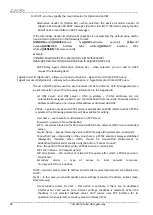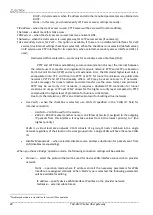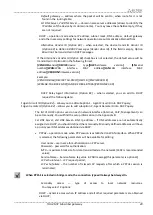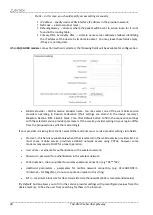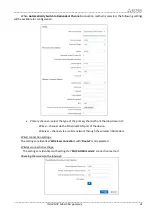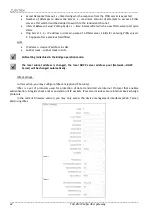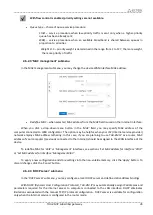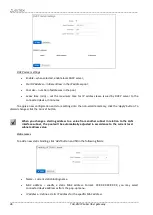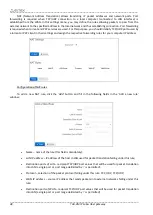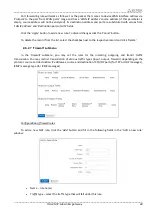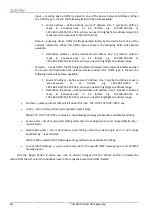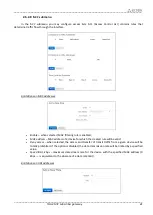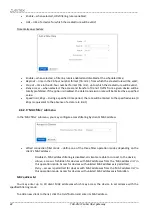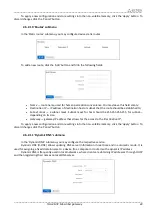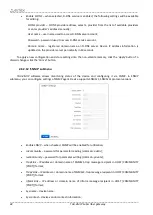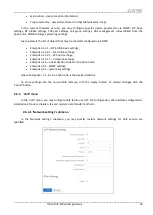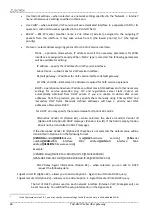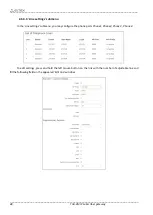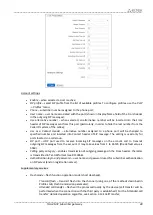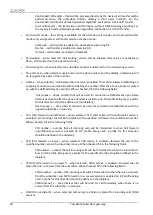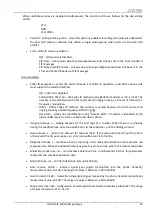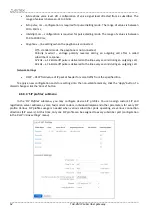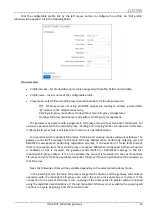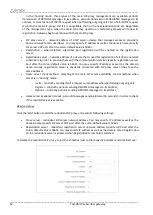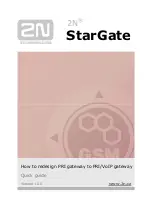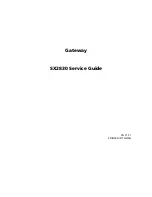
____________________________________________________________________________________
____________________________________________________________________________________
40
TAU-4M.IP Subscriber gateway
–
Input
– incoming device traffic (recipient is one of the device network interfaces). When
this traffic type is chosen, the following fields will become available:
Source address
– define starting source IP address. Use '/' symbol to define a
mask in 'xxx.xxx.xxx.xxx' or 'xx' format, e.g. 192.168.16.0/24 or
192.168.16.0/255.255.255.0, when you need to highlight an address range (/24
mask record corresponds to /255.255.255.0).
–
Output
– outgoing device traffic (traffic generated locally by the device from one of the
network interfaces). When this traffic type is chosen, the following fields will become
available:
Destination address
– define destination IP address. Use '/' symbol to define a
mask in 'xxx.xxx.xxx.xxx' or 'xx' format, e.g. 192.168.18.0/24 or
192.168.18.0/255.255.255.0, when you need to highlight an address range.
–
Forward
– transit traffic (traffic being transferred between two network interfaces when
the source and destination are external devices). When this traffic type is chosen, the
following fields will become available:
Source IP address
– define source IP address. Use '/' symbol to define a mask in
'xxx.xxx.xxx.xxx'
or
'xx'
format,
e.g.
192.168.16.0/24
or
192.168.16.0/255.255.255.0, when you need to highlight an address range.
Destination IP address
– define destination IP address. Use '/' symbol to define a
mask in 'xxx.xxx.xxx.xxx' or 'xx' format, e.g. 192.168.18.0/24 or
192.168.18.0/255.255.255.0, when you need to highlight an address range.
Protocol
– packet protocol that will fall under this rule: TCP, UDP, TCP/UDP, ICMP, any.
Action
– action to be performed on packets (reject/skip).
When TCP, UDP, TCP/UDP are selected, the following settings will become available for editing.
Source ports
– list of source ports falling under the rule (a single port or port range delimited by '-'
is permitted);
Destination ports
– list of destination ports falling under the rule(a single port or port range
delimited by '-' is permitted).
When ICMP is selected, the following settings will become available for editing:
Type of ICMP message
– you can create the rule for the specific ICMP message type or for all ICMP
message types.
Click the 'Apply' button to add a new rule. To discard changes click the 'Cancel' button. To delete the
record from the list, select the checkbox next to the respective record and click 'Delete'.

